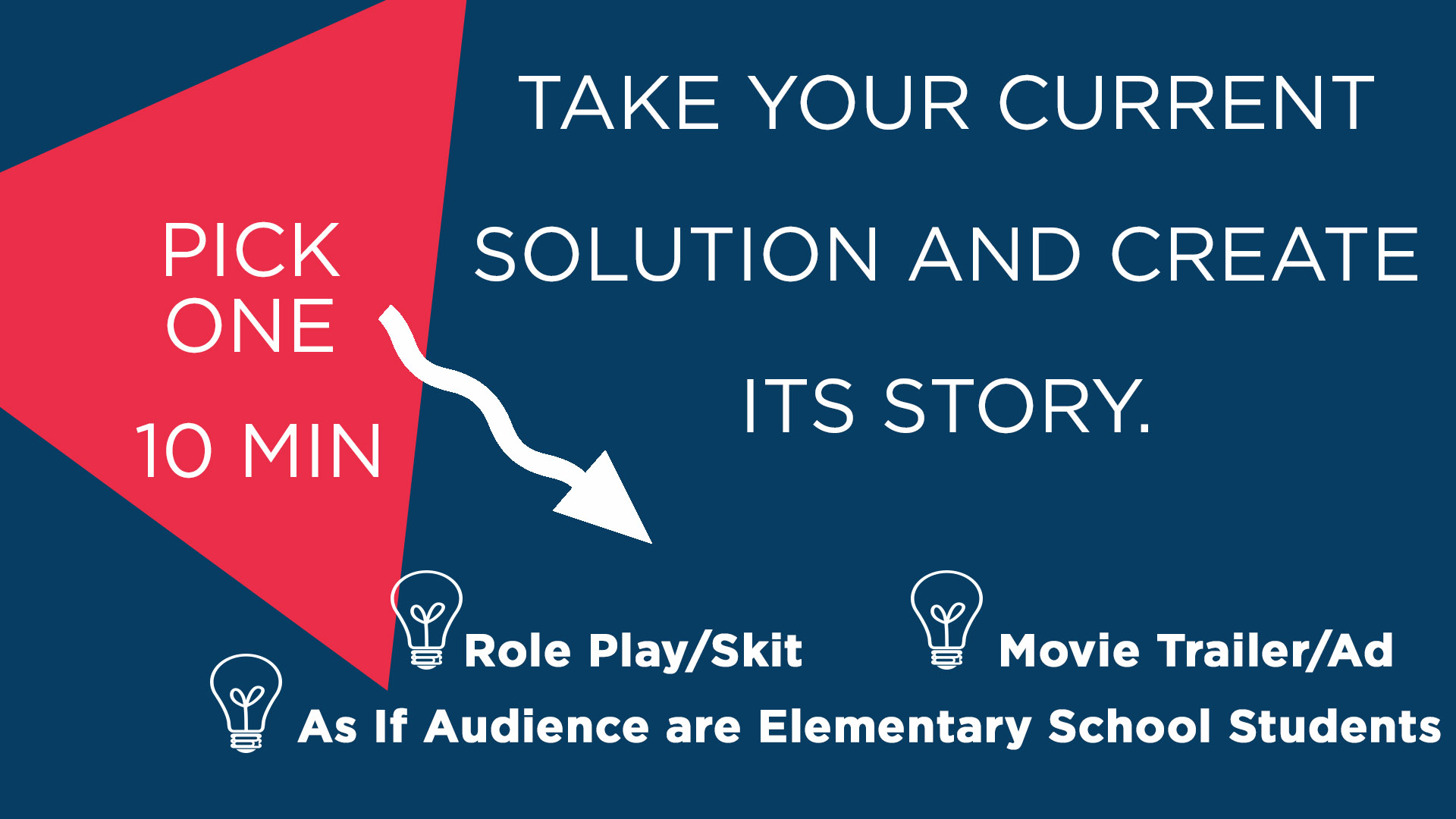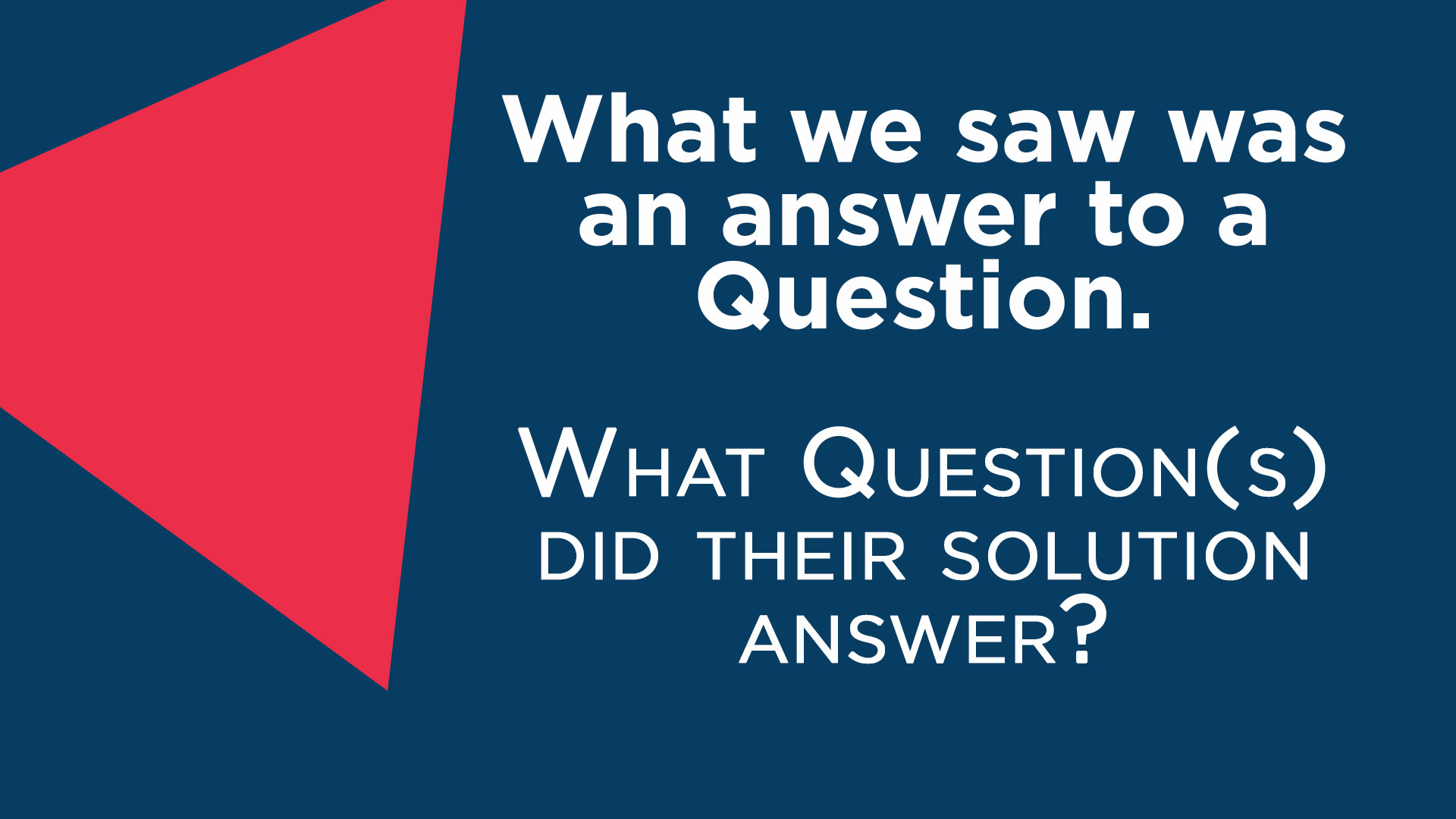Resistant to Press Reset
Ever find yourself with a group of designers stuck, mired, and resistant to move away from a solution? As Pinya points out very accurately in her blog post, Pitch a Story, it happens. "I don’t know entirely about the other groups, but for the ADHA group they used the same solution they started with. I’m curious if they truly still think that it is the best solution, or if there is still some unease about potentially going in a new direction."
"Design thinking takes time and practice like everything else to become proficient at it, and the CDC members aren’t quite at that point yet. They have just been introduced to this concept, so I understand why they might want to just stick with what they already know."
I know I have had my share of "I just have to plow through to the end. Too much time, effort, and resources have already been utilized. PLUS, I have a deadline. I can't show up empty handed and let them know, I got nothin." Well, I am sure I have imagined these quotes in some form or another.
Our time at the CDC for the DEEPdt (i)gnite 2-Day workshop came when three teams had already been knee deep in their project for months. I can imagine our arrival threw a huge monkey wrench into their closing moments of wrapping their project up in a nice, neat bow and giving it away to the higher ups. We arrived on the scene and asked, "Are you leading with your solution, or are you leading with your Users?" At the moment, they had composite Users and had spent a majority of their time during the project unpacking research, data points, and drafting a solution. Either their solutions were for more funding, a policy change, or the need for more information + funding. As design thinkers our approaches are different. We are looking at individuals, learning their stories, gaining understanding of their experiences, and finding MoVes (Moments of Visible Empathy). We are designing for a User, not the Masses. Taking the original topic, observation, question, or opportunity for change as a launching pad to who knows where. Allowing for possibilities, deviations, wrong turns, and resets are just part of the game. Also, simple and smaller moments, tweaks, and ahas tend to make all the difference. Again, our approaches are different and there needs to be understanding of this. A huge, massive government organization like the CDC serves the masses, designs for the masses, and spends a whole lot of time detangling and creating policy, regulations, rules, seeks funding, and juggling multiple agencies to screw in a light bulb (the light bulb part is a metaphor). Yet, they recognize that their approach is not the only approach available to them to solve problems. And they must be commended for their efforts and openness to try something different. Case in point, The Idea Lab and CDC Open Idea Lab (it was the CDC Open Idea Lab we were thankful to work with during the 2-day DEEPdt (i)gnite experience).
So you can imagine when they were asked about what was driving their project, the last thing they wanted to hear was to set aside their heavy-man hours, finely crafted solutions and return to the basics of the needs of individual users. Day 1 was about culture, shifting perspectives, and trying to deviate from the narrow and flair, baby flair. As we entered Day 2, as facilitators and design thinkers, we adjusted course based on the needs of our users and not to the solutions for Day 2 we had plotted back at Mount Vernon. And even in the middle of Day 2, we pivoted greatly from our plots because design thinking is messy, design thinking is not linear, and as design thinkers, our Users led.
Below are two slide shots from an exercise we utilized called, Reverse Engineering (created by Bo Adams Check out the 2nd slide-my fav) The hope was to see if they just might be solving for the wrong problem. With some story telling + creative constraints, the teams were challenged to demonstrate/show their solution versus talking about it. All three teams did a wonderful job and appeared to have fun showing their solution. Yet, at the conclusion of the exercise with some very meaningful and insightful feedback by many in the space, two of the teams pretty much stayed course. Even though there were some very obvious indications they needed to reset. The third team came away with some strong ahas & moments of pause that appear that they may hit the Reset button (that is if they are given more time by the higher ups).
So the point of this very long rambled post... Why are we resistant to press reset? What does that signal to others? I might even venture that we are resistant to even hit the pause button. But why? I believe for DEEP design thinking to continue to grow roots, infuse itself in learning & living environments, the reset button (also know as iterate button) needs to be lit green at all times. And even without prompting, be hit just to keep designers true to the needs of the User. If the User is not leading you and its all about the solution, well there are a lot of products on the shelves of Wal-Mart to keep it company. Also, as Pinya stated, "Design thinking takes time and practice." A seed was planted. Eventually it will grow and lead you.


